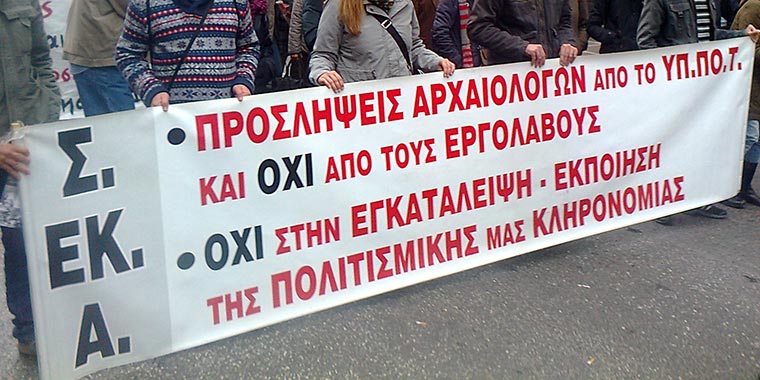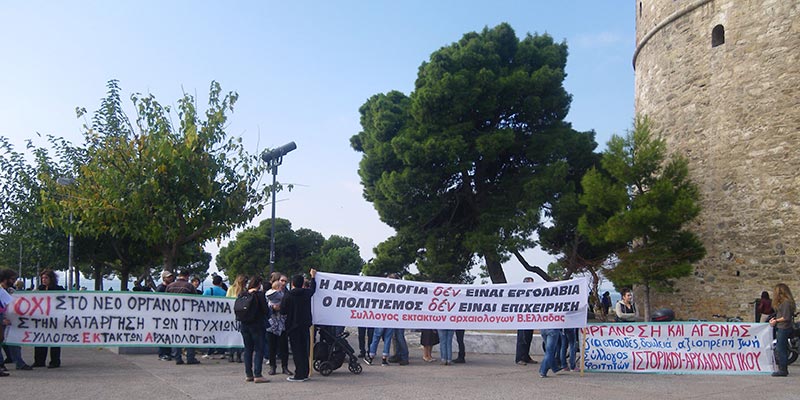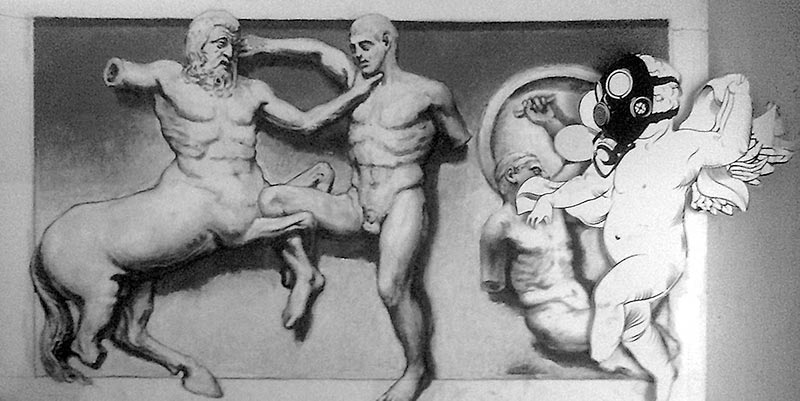INVITATION
The Netherlands Institute at Athens cordially invites you to the lecture by
Prof. Dr Wil ROEBROEKS Leiden University
“The Peopling of Pleistocene Europe – with or without fire?”
Friday, October 31, 2014 at 7 p.m.
Makri 11 – Makrigianni (metro Akropoli) R.S.V.P.: 210 9210760 or nia@nia.gr
The Peopling of Pleistocene Europe – with or without fire?
In the last decades our views on the earliest occupation history of Eurasia have changed significantly, with an unambiguous presence of hominins now attested at 1.8 million years ago in Dmanisi (Georgia) and at > 1.6 million years in northern China, much earlier than previously envisaged. In Europe, the earliest traces of a hominin presence come from the Mediterranean area and are more than one million years old. From about half a million years ago, hominin occupation of Europe seems to have been more continuous, with stone artefacts present in sediments deposited under warm-temperate as well as under colder environmental settings. Most archaeologists would agree that the colonization of Eurasia, where temperatures at times dropped below freezing point, was tied to the use of fire – as already proposed by Charles Darwin. Yet the archaeological record suggests that early hominins moved into Eurasia without the habitual use of fire. It is only from 300,000 to 400,000 years ago onward, that the European archaeological record regularly contains traces of fire use, suggestive of hominins’ ability to conserve and transport and to use fire during successive occupations. But what does that mean, how strong is that archaeological record? Would it have been possible to survive without fire in Pleistocene Europe? Are we looking at the right sites, the right data to study early fire use?
Netherlands Institute at Athens, Makri 11, 11742 Athens, Tel.: 210 9210760, Fax: 210 9210770, E-mail: nia@nia.gr, www.nia.gr
Σχετικο link εδώ
Τελευταίες ανακοινώσεις
Περισσότερα άρθρα στην κατηγορία: Επίκαιρα
Ανοιχτή επιστολή των δύο συναδέλφων στο έργο του ΜΕΤΡΟ Θεσσαλονίκης στις οποίες δόθηκε η εντολή απόλυσης Στο πλαίσιο της [...]
Αγαπητοί, Η οργανωτική επιτροπή του CAA GR 2016 σας προσκαλεί να καταθέσετε προτάσεις για προφορικές ή αναρτημένες ανακοινώσεις που αφορούν [...]
Αγαπητοί συνάδελφοι Σας στέλνουμε, με τους παρακάτω ηλεκτρονικούς συνδέσμους, το Πρόγραμμα και το βιβλίο των Περιλήψεων του Διημέρου ανακοινώσεων με [...]
Αγαπητοί συνάδελφοι, Ο κύκλος της Γ’ Συνάντησης για το Αρχαιολογικό Έργο Κρήτης κλείνει επιτυχώς με την έκδοση των δύο τόμων [...]






